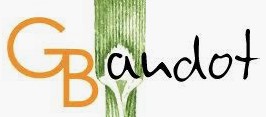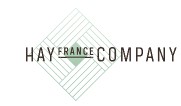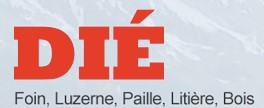Summary
The hay market in France was part of the wider forage market and was crucial for livestock feed, particularly during periods when grazing was not possible. Although valued at 6.62 billion euros, the market was in decline due to factors such as changes in farming practices, urbanization and changes in food consumption leading to a reduction in demand for meat.
The Common Agricultural Policy (CAP) had a negative impact on forage acreage, encouraging the cultivation of field crops to the detriment of forage. Demand for hay was mainly fuelled by the livestock sector, in particular herbivores such as cattle and sheep. Weather conditions strongly influenced historically warm hay production, resulting in dry soils which probably had an impact on hay reserves and could have led to an increase in livestock slaughter. According to the most recent data, hay production was a multi-stage process, including cutting, tedding, windrowing and baling, which added to the complexity of the market.
The market is made up of a variety of players, including producers, traders, transporters, agents, brokers, wholesalers and retailers. As livestock diets have diversified, demand for different types of hay has evolved, with prices varying according to factors such as type, packaging, transport and seasonal conditions. The cost of hay production itself can be significant, with associated costs such as field work and machinery use.
European legislation, in particular the CAP, has continued to affect the market, although specific figures for aid allocated to crop and forage production date from an earlier period. Innovations such as the TSG label for hay milk, which certifies high-quality dairy products from animals fed predominantly on hay, point to the potential for market recovery. In the absence of more recent data beyond 2020, it is difficult to give an accurate picture of current market trends. Nevertheless, based on past trajectory, we can anticipate the continuing influence of climatic conditions on production, potential changes in CAP policies, the challenges posed by alternative forage sources, and changing consumer preferences influencing the structure and demand of the hay market.
Trends in demand for hay in the French agricultural sector
In recent years, the French hay market has shown significant trends in demand, mainly driven by the agricultural sector. Hay, which is an essential component of animal feed, particularly for livestock such as cattle (between 15 and 20 million head) and sheep (around 7.2 million head), has seen demand evolve due to a variety of factors. The evolution of livestock production in France is one of the main factors influencing demand for hay. Over time, the composition of the livestock population has changed considerably, with a notable transition from sheep herds to a predominance of cattle. This change in domestic animal populations naturally has an impact on the volume and type of hay required. In addition, the geographical distribution of flocks has changed, affecting the demand for hay in different regions of France. With the reduction in livestock numbers around the Paris basin and in the south-west, marked by a reduction in permanent grassland of 513,800 hectares in ten years, the hay market is experiencing regional dynamism and challenges.
According to AGRESTE, hay production amounted to some 602,249,860 quintals on a surface area of 12,256,593 hectares, with an average yield of 49.14 quintals per hectare. However, as much of the hay produced is used to feed livestock rather than being sold, it is reported that around 20 million tonnes of forage, including hay, are marketed each year. Climatic variability also plays a decisive role in the evolution of the hay market. In the event of meteorological problems such as severe soil drought in hot weather, the quantity and quality of hay production can be considerably affected, which can lead to increased recourse to slaughter due to low hay reserves. AGRESTE data underline that while France's livestock production sectors are maintaining or recovering, the overall increase in domestic demand remains fragile. There is a growing dependence on imports, and with a widening trade balance deficit and weak growth in domestic consumption, the projection of substantial growth in the agriculture-dependent hay market remains uncertain.
These factors, combined with long-term trends influenced by the Common Agricultural Policy and feed diversification (such as the increase in maize silages silage and cereals in livestock diets), present an interesting challenge for the hay market in the years ahead. However, the promotion of hay in livestock feed through labels such as Spécialité Traditionnelle Garantie (STG) and the pressure for high-quality, GMO-free diets.
Key players in the French hay market: A symphony of grasses and traditions
In the verdant, bucolic landscapes of France, a select group of hay producers and merchants play an essential role in the cultivation, sale and distribution of this staple food for herbivorous animals. These market players form an integral network, ensuring the flow of high-quality hay from their farms to feedlots and stables across the country.
Commercial hay producers
- SAS Gilles Baudot is a name synonymous with quality in hay production. Operating with precision and care, Gilles Baudot farms demonstrate the meticulous process of growing, harvesting and preparing the finest hay that serves as vital food for countless animals.
- GAEC Le Merinos, a Groupement Agricole d'Exploitation en Commun, embodies the collective effort and collaboration that underpin the success of French agriculture. Thanks to its in-depth knowledge of the dynamics of local pastures and its commitment to sustainable practices, GAEC Le Merinos offers hay that carries the very essence of the region's natural wealth.
Commercial hay traders
- Hay France Company has established itself as a leading figure in the commercial hay space, bridging the gap between producers and the market. Its logistical prowess and strategic market knowledge ensure that hay reaches buyers in the most efficient way, navigating the complex supply chains that define modern agriculture.
- Fourrages Doulière and Fourrages Girerd are two beacons in the forage trade. By offering a wide range of hay products from different varieties of grasses and legumes, these merchants provide choices that respond to specific needs and requirements.and preferences, highlighting the agricultural biodiversity for which France is renowned.
Hay trading platforms
- Agriaffaires, Pleinchamp and La Balle Ronde have become digital hubs for hay transactions. These platforms democratize trading, enabling farmers to reach a wider audience and offering buyers the convenience of location-based searches and a range of prices.
Together, these key players in the French hay market - from the farmers who tend the land to the traders and facilitators of the digital marketplace - make up a harmonious industry centered on tradition, quality and the common goal of supporting the country's vibrant agricultural life.
to understand this market
Detailed content
 Inforamtion
Inforamtion
- Number of pages : 30 pages
- Format : Digital and PDF versions
- Last update : 09/12/2022
 Summary and extracts
Summary and extracts
1 Market overview
1.1 Hay market definition
Hay is, according to laroussea dried forage, most often composed of alfalfa or timothy, intended for feeding herbivores. Drying mown grasses enables them to be kept longer, and therefore plays a role in feeding domestic herbivorous animals when grass is scarce in grazing areas (winter, drought, etc.). Its nutritional characteristics distinguish it for example, from straw, the nutrient-poor stalks of grasses separated from the grain during threshing. Its low moisture content (around 15% to 20%) also distinguishes it from ensiled grass, preserved by fermentation with a grass moisture content (around 35 to 45%).
The hay market is therefore a sub-segment of the forage market. According to the Ministry of Agriculture's Statistics and Forecasting Department (AGRESTE), includes production from artificial grassland (sown with fodder legumes and cultivated for a maximum of 3 years), temporary grassland (sown with fodder grasses for less thansown for less than 6 years) and permanent grassland (sown or of natural origin, producing at least 1,500 forage units per hectare for more than 6 years). Temporary and permanent grasslands are intended to be mown, ensiled or grazed.
In France in 2020, the market will be worth 8.04 billion euros.
The hay market is also a sub-segment of the animal nutrition market, 52% of which comes from cereals (source: Businesscoot). It concerns farmed herbivorous animals (requiring human intervention for year-round feeding): ruminants (sheep, cattle, goats and buffalo) and non-ruminants (horses, donkeys, mules).
Other trends in the use of hay are emerging: human cooking, mulching...
1.2 The global hay market
We have no data on the global hay market. It is therefore appropriate to look at the global alfalfa hay market to get an idea of the scale of the hay market.
After a downturn caused by the pandemic in ****, with a *.*% contraction in the sector's sales, the market will return ...
1.3 A shrinking national market in the face of changes in agricultural activity
AGRESTE data for **** show a production of all types of forage and silage of ***,***,*** quintals (***):
Source: ****
The average value of a ton of hay is *** euros in **** (***).
We would need to estimate the rate of self-consumption of hay by producers , since it is primarily used to feed livestock outside the grazing ...
1.4 Hay market trade balance
To understand international trade in hay, UN Comtrade data should be analyzed using the following code:
******** - Hay, alfalfa, clover, sainfoin, forage kale, lupin, vetches and similar forage products (***)
French trade balance for the hay market France, ****-****, in millions of US$ and as a % of sales Source: ****
France is ...
2 Demand analysis
2.1 An almost unique demand: the livestock sector
The vast majority of hay is sold to herbivore breeders as animal feed. The hay market is therefore highly dependent on the level of livestock farming in France and the composition of the herd.
Hay is chosen for its nutritional properties and quality.
Horse breeding
Growth in the number of horses France, ...
2.2 Strong cyclical impacts on hay and related markets
Decline in meat consumption
Total meat consumption in France over the last decade has fallen very slightly, with average annual per capita meat consumption (***) down by just *.*% between **** and ****. However, this slight decline has been a structural trend for * decades, with a *.*% drop in **** compared to ****, and a *.*% drop between **** and ...
2.3 Other possible uses for hay.
Hay in the diet of rabbits and pet rodents
A must-have food for rabbits and rodents, hay is tasty, rich in fiber and provides optimum wear for their teeth.
Hay can also be used as mulch, particularly in permaculture
Mulching is a technique that consists in covering the soil around plants ...
3 Market structure
3.1 The main stages in making hay
To produce hay, the grass has to go through, according to equipedia.ifce.frseveral important stages :
mowing the grass to a height of * to * cm ; tedding, which consists in turning the grass over so that it dries evenly; windrowing, to finish drying the hay and gather it together; baling, once the ...
3.2 Market players and French production
Producers: they use merchants to handle the sale and distribution of their hay. However, they may wish to sell their production themselves (***), and use brokers or transporters directly to sell the product.
Merchants : they act as a link between producers and wholesalers, or directly with end customers (***).
Carriers : they are in ...
3.3 Adapting the hay market to short-distance distribution trends
La Coordination Agrobiologique (***) has published a guide dedicated to the exchange of fodder in short circuits in order to reinforce the autonomy of organic farms. Indeed, the reduced use of chemical inputs opens the door to greater vulnerability to the vagaries of weather and disease.establishing a local fodder market provides ...
4 Offer analysis
4.1 Plural hays
Hay is a forage made from grass that has been mowed and then dried in the open air and sun for several days, to reduce its moisture content from **% to less than **% as quickly as possible, with a view to dry preservation. This forage is thus characterized by a high dry ...
4.2 Different prices for different types of hay
The Round Ball provides information on the characteristics that influence the price of hay:
It depends on the type of hay: the price of natural meadow hay(***). It depends on packaging: hay packaged in small rectangular bales is much more expensive than hay packaged in large round bales, due to the ...
4.3 Organic hay, a new supply trend
Demand for organic hay
The market for organically grown hay does exist in France. given the growing consumer demand for organic products, it's safe to assume that the market is booming. Many dairy farmers are going organic, which increases demand for organic hay, and the rest of the demand comes from ...
5 Regulations
5.1 Major European legislation
The Common Agricultural Policy plays a major role in the agricultural organization of European countries, including France. Created in **** as part of the Treaty of Rome, it set out the operating rules for market organizations as early as ****. The Common Market Organizations, discussed in the first part of this study, were ...
5.2 Hay milk, a way of upgrading hay into cattle feed
The STG (***) label certifies a GMO-free diet, composed of **% grass and hay. This label, according to agriculture.gouv.frhas been available in France since March ****. The total absence of fermented products in livestock feed ensures high quality milk or cheese, for example. In this way, the label promotes the use of ...
6 Positioning the players
6.1 Segmentation
- Gilles Baudot
- Le Merinos GAEC
- Hay France
- Fourrages Girerd
- Dié Ets
- MB Diffusion Agriaffaires
- Pleinchamp
- La Balle Ronde
 List of charts
List of charts
- Alfalfa hay market trends
- Number of equines
- French cattle population in thousands of head
- Goat and sheep livestock trends
- Average annual consumption per inhabitant
All our studies are available online in PDF format
Take a look at an example of our research on another market!
Companies quoted in this study
This study contains a complete overview of the companies in the market, with the latest figures and news for each company. :
 Choosing this study means :
Choosing this study means :
Access to more than 35 hours of work
Our studies are the result of over 35 hours of research and analysis. Using our studies allows you to devote more time and added value to your projects.
Benefit from 6 years' experience and over 1,500 industry reports already produced
Our expertise enables us to produce comprehensive studies in all sectors, including niche and emerging markets.
Our know-how and methodology enable us to produce reports that offer unique value for money.
Access to several thousand articles and paid-for data
Businesscoot has access to all the paid economic press as well as exclusive databases to carry out its market research (over 30,000 articles and private sources).
To enhance our research, our analysts also use web indicators (semrush, trends, etc.) to identify market trends and company strategies. (Consult our paying sources)
Guaranteed support after your purchase
A team dedicated to after-sales service, to guarantee you a high level of satisfaction. +44 238 097 0676
A digital format designed for our users
Not only do you have access to a PDF, but also to a digital version designed for our customers. This version gives you access to sources, data in Excel format and graphics. The content of the study can therefore be easily retrieved and adapted for your specific needs.
 Our offers :
Our offers :
The Hay Market | France
- What are the figures on the size and growth of the market?
- What is driving the growth of the market and its evolution?
- What is the positioning of companies in the value chain?
- Data from several dozen databases
Pack 5 études (-15%) France
- 5 études au prix de 75,6€HT par étude à choisir parmi nos 800 titres sur le catalogue France pendant 12 mois
- Conservez -15% sur les études supplémentaires achetées
- Choisissez le remboursement des crédits non consommés au terme des 12 mois (durée du pack)
Consultez les conditions du pack et de remboursement des crédits non consommés.

























